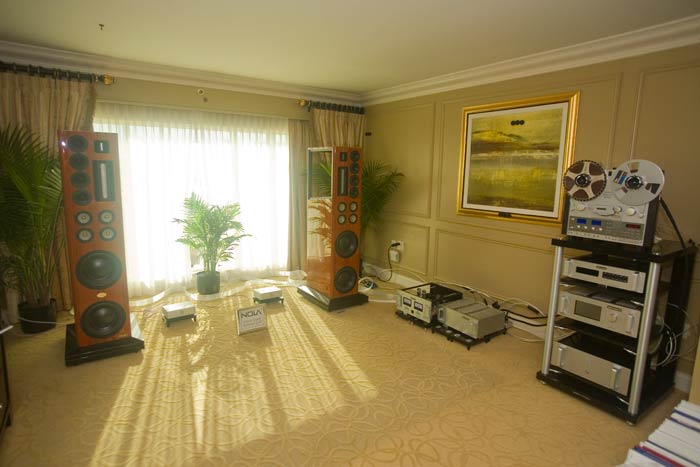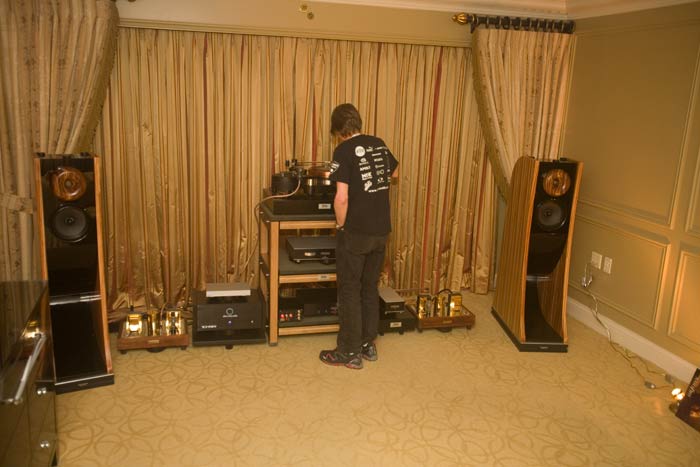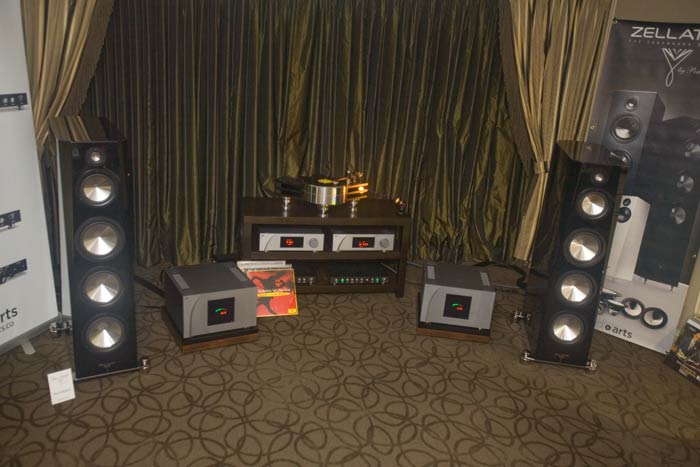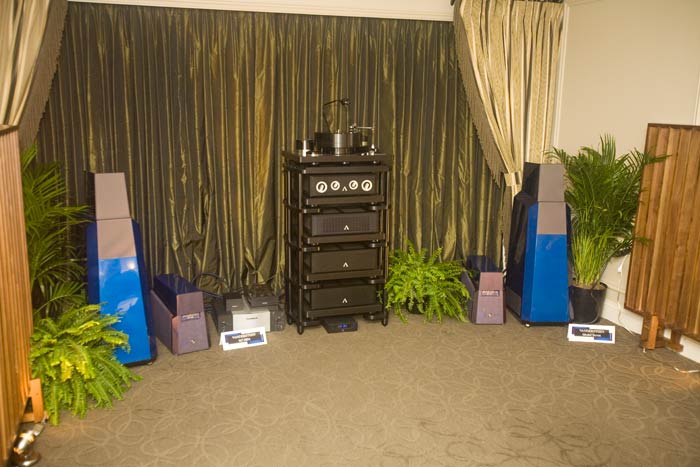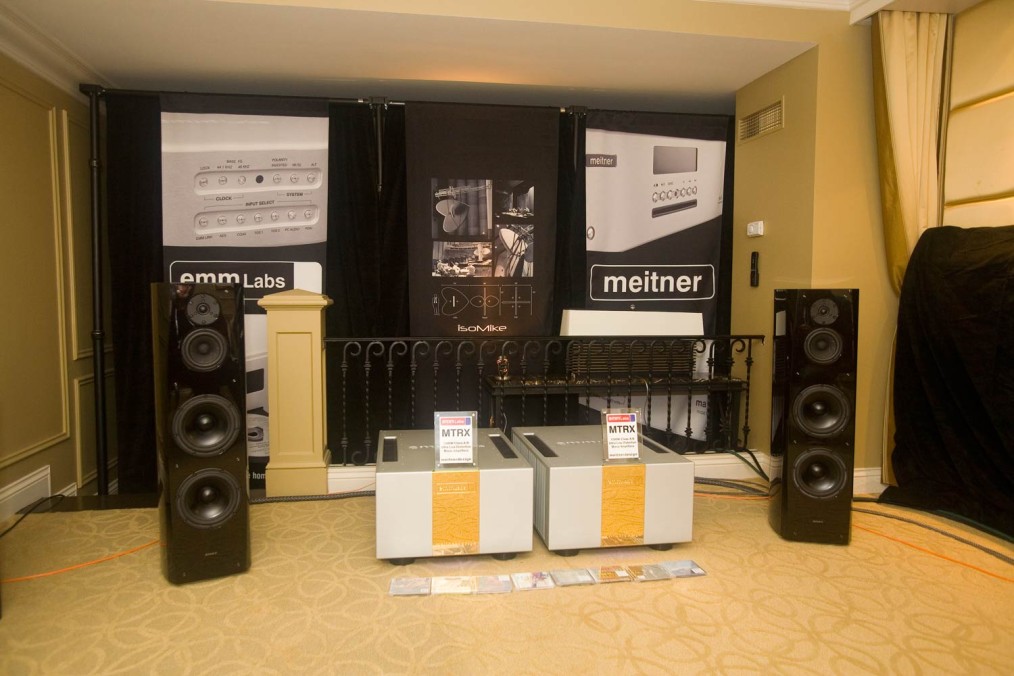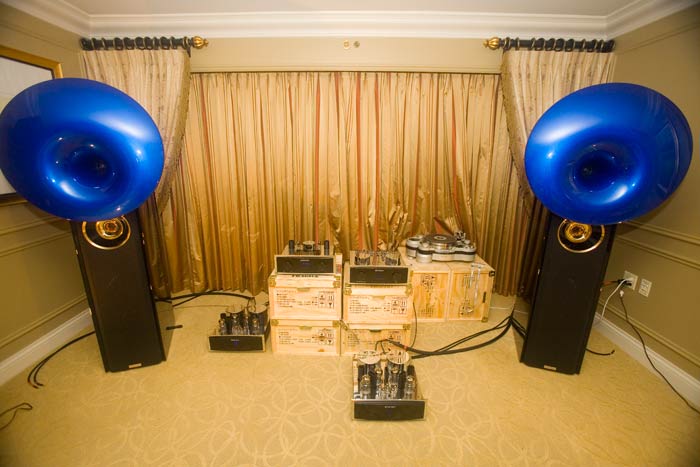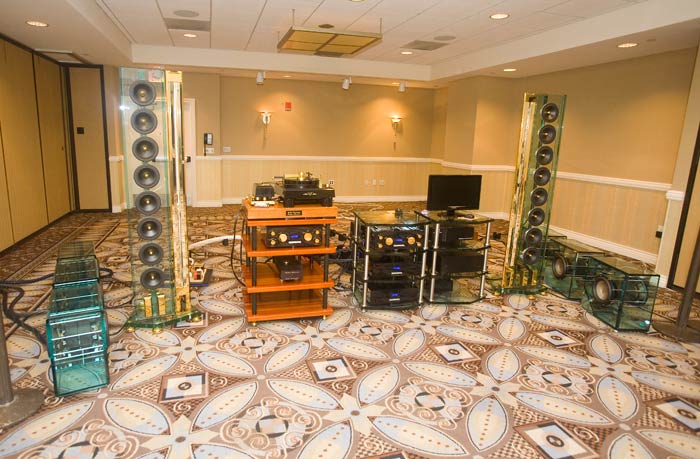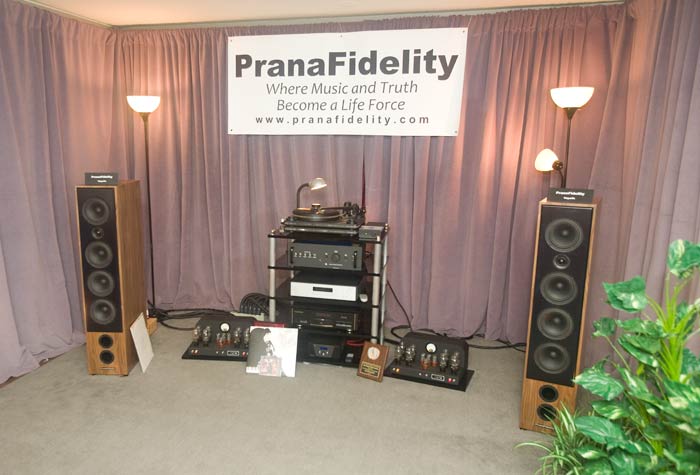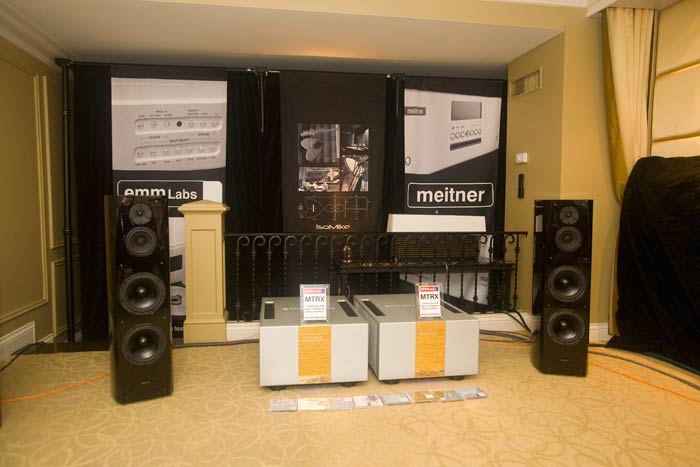[Similar to the RMAF 2013 show report – we will put the politically correct version for all ages and levels of audiophile, along with well over 1000 photos, over on Ultimist – and we will put the more opinionated report here on the blog, which we will call ‘Most Interesting of Show’, for people who are focused on Pursuing the Ultimate Music Experiences.]
Again, in no particular order… [if I forget to mention a brand of cable or rack, and you think it needs to be mentioned, please let us know, either here or in a personal email. Oh yeah, and anything else I got wrong? Let me know about that too 😉 (Neli does try to correct my bad grammar, but sometimes she has a hard time keeping up with my fingers when they are on their wild grammar-killing sprees)].
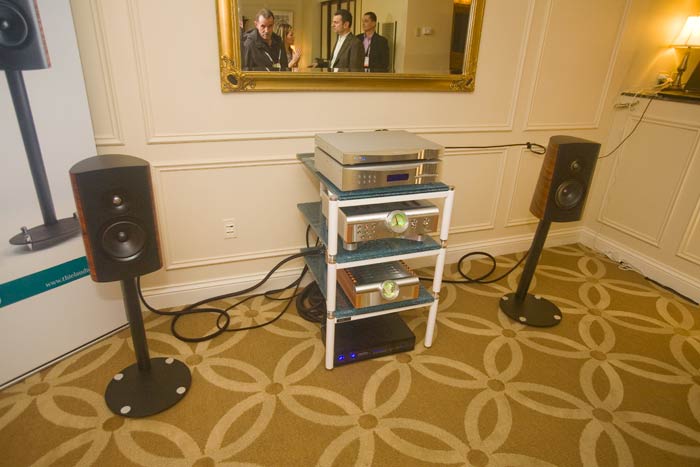
Thiel TM3 speakers on D’Agostino electronics and dCS digital
This system was interesting to me because it had the best sound of any Thiel speaker system I have heard lo these many years. It was musical, approachable, decent harmonics, not grainy or shouty, and even engaging to a certain degree.
I didn’t play our own music here, so their ultimate capabilities are unknown to me, but if I was a Thiel dealer, I would be looking into these speakers (and the new modern-looking Thiel TT3) and picking up D’Agostino gear to play on them very, very seriously [OK, yes, D’Agostino is a wee bit expensive for these speakers, but they really seemed to like each other].
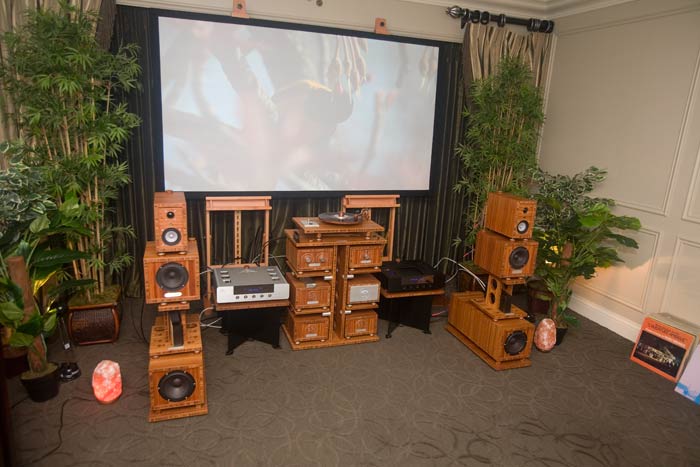
Tri-Art Audio
This somewhat startling-looking system sounded pretty darn good. I heard very little boxiness or speaker coloration, so there was good separation, which I am quite partial to. From separation we usually get good imaging and soundstaging, linear-ish dynamics and response. So the performance of this system was up there with the second or third tier of rooms at this show. Not a lot of bass here, but at a show that is often for the best.
I really just thought this was interesting because, well, if you are someone who really likes the use of natural-looking high-end audio cabinetry, your choices in brands of gear are severely limited. And here we have someone who used just that approach and it worked! It is something well-worth listening to.

Astell and Kern
Astell and Kern is a Korean company that makes, as I understand it, a handheld device with a DAC and discrete component output stage that orchestrates digital playback. In this room they were showing a system with prototypes of their forthcoming speakers, tube amplifier (a solid-state amplifier will also be available), and preamp [and maybe cables too, I forget].
Although they did not play this loud enough for me to get a sense of the overall quality [no, I am too damn overly polite and did not ask them to turn it up. I’ll try to do better in the future], these speakers are by the same designer who built the Metal Design Systems [I think it was called] speakers that showed here several years ago and with which I was extremely impressed [probably still have their brochure here somewhere. I know I saw it here a year ago but sometimes I do have to throw things out when the file cabinet will no longer accept new brochures 😉 I can’t be the only one who collects these things].
So, the fact that they are (1) using this speaker designer who can build speakers with excellent [excellent!] separation and transparency [both attributes a reflection of accuracy for those who shy away from audiophile terminology], and also that they are (2) willing to go the extra mile and build a tube amp for those of us who think tube amps are usually better sounding than solid-state for listening to music, and (3) they are heavily into the modern streaming-music revolution, so they will be offering us the conveniences of same – well, this is a company to watch, IMHO.
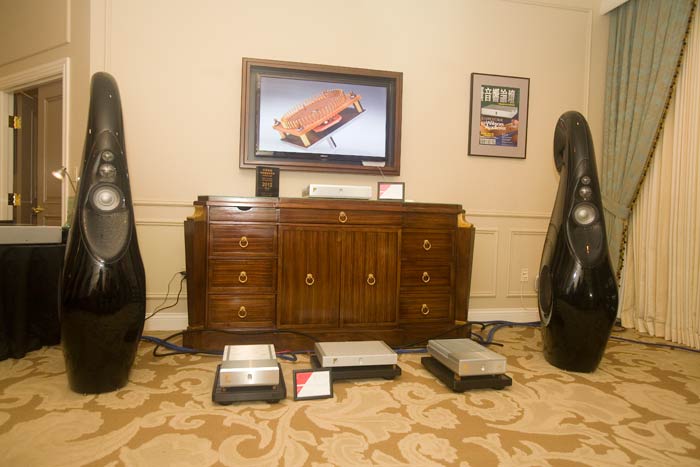
Ayre Acoustics electronics on Vivid Giya G1 speakers. HRS amp stands. Cardas cables.
Vivid, a home audio speaker company that deserves a lot more accolades than it gets. Ayre, an home audio electronics company that… also deserves a lot more accolades than it gets.
This system was approachable, enjoyable, somewhat sophisticated, although a little laid back. Essentially, I could actually spend time listening to this over the course of many, many hours and you wouldn’t have to hold a gun to my head. Quietly in the top 10 rooms.
Other the years, Ayre is slowly edging out all other solid-state amplifiers in the reasonably priced [or, at least, not outrageously priced] category to my way of thinking. Just enough accuracy, resolution, dynamics, harmonics to keep it all sounding like music.
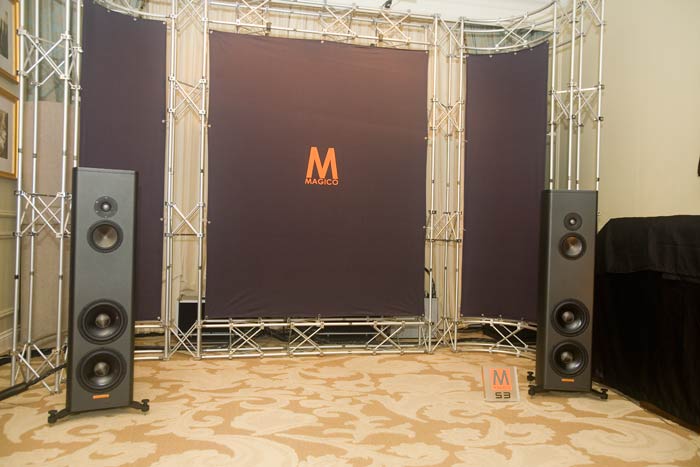
Magico S3 speakers on Vitus electronics
It seems these are new speakers from Magico [who seems to pop them out like … well, like popcorn. Not sure how they do it but I kind of wish they’d stop it. Keeping up with all these puppies is tiring me out], and one can hope that they took the lessons learned from the successful nd smaller S1 speaker [hope they are successful; a very nice speaker at a very nice price] and made these using the same design parameters with just a bit more bass.
Did they succeed?
Hard to tell. Hard to tell.
I like that they put these on some well-known electronics. Unfortunately the sound was not very exciting, not quite as tight as what would show these off to be the true bigger brother to the S1 – but this is also often a signature trait of the electronics being used. So… hard to tell. Hard to tell.
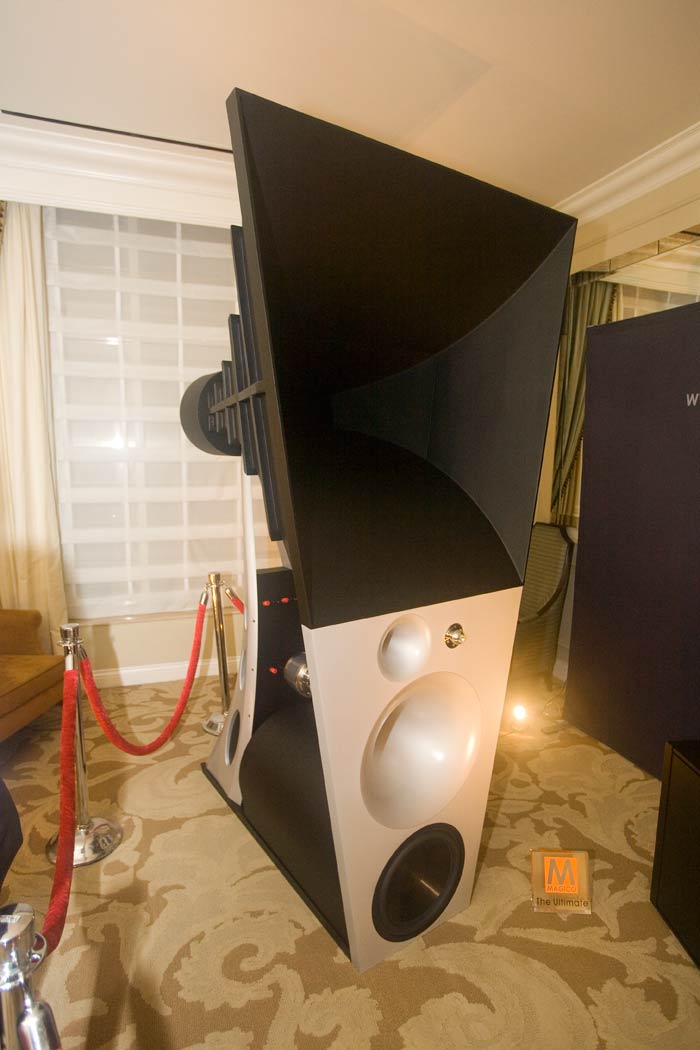
Magico ‘the ultimate’ speakers on static display
I am sure there will be plenty of reports that regurgitate the specifications of these $600K speakers. So I will just post a few observations.
What I wonder is, when run in 5-way mode, or even 3-way mode, where does one put all those amps? Especially if you use higher quality monoblocks. Can you imagine 10 amps on their 10 amp stands, each with their own power cord and interconnect and speaker cables? I only ask this with a slightest bit of tongue in cheek 🙂
The speakers are solid aluminum [which we were not supposed to touch and I, at least, did not get to touch them. Alon would kill me (again 🙂 )]. But it *looks* like some kind of composite material; the corners are mitered so well, and the paint job so thick and warm-looking, that it is hard to believe it is made of metal. The fit-and-finish here is amazing.
We have a few dozen photos of this speaker which we will be posting on Ultimist.

